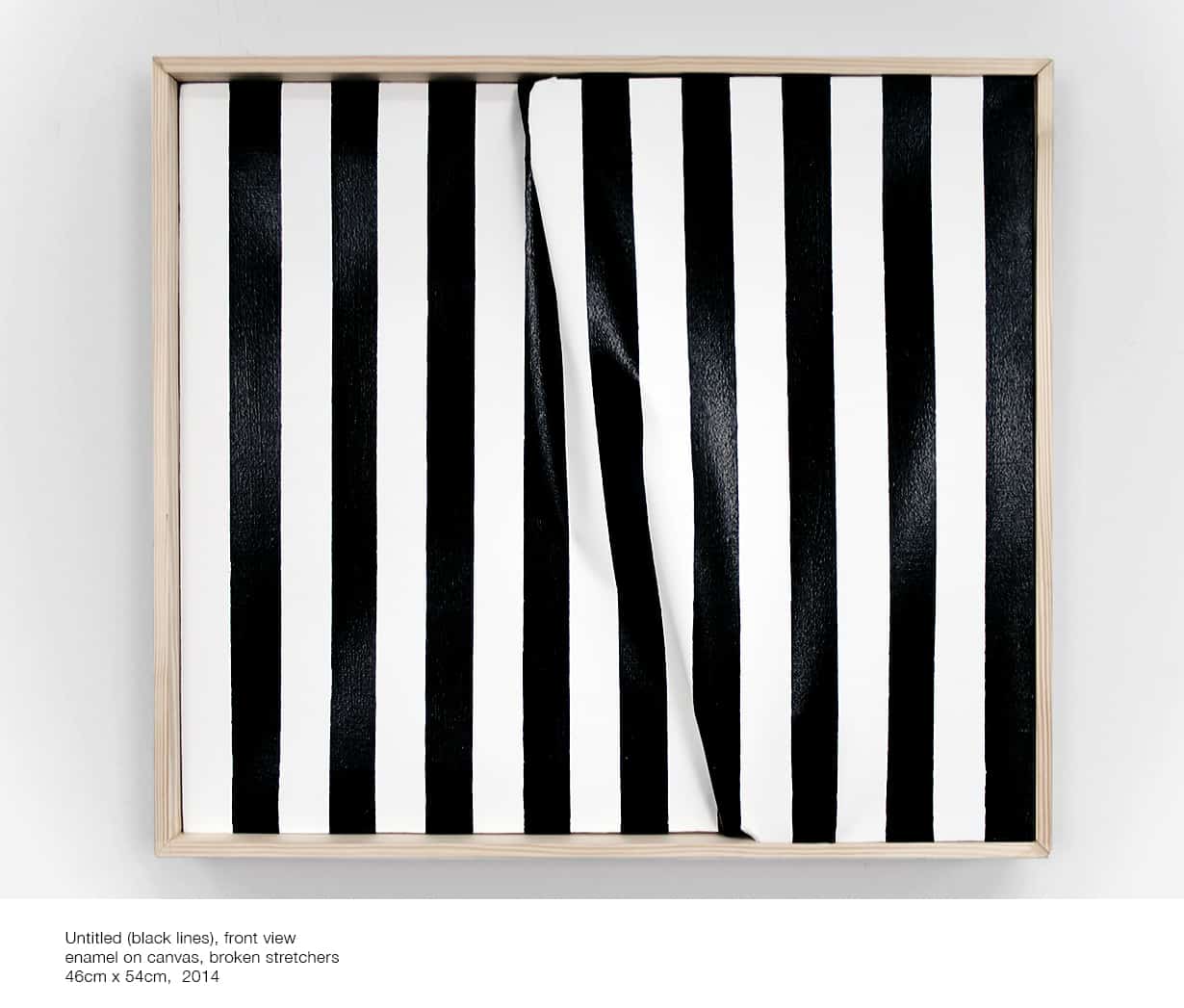Alice Gaskon and Árpád Forgó collaborate together in “Transitions”, the latest art exhibition in the Budapest-based Platan Gallery. As the project starts at the beginning of March, now is a great time to look over their visually alluring works, and to have a closer look at contemporary geometric and abstract art, where significant concepts meet real craftsmanship. Artists tell us about what inspires them, and shed light on the hurdles they encounter in the creative process. They also share their opinions on popular trends in art, as well as their view on current art market tendencies.

Opening of the exhibition “Transitions”, artists: Alicja Gaskon and Árpád Forgó, curator: Tomasz Piars, Platan Gallery, March 2016, Budapest
Patrycja Rup: Your work catches the viewer’s eye, and plays with perception; modified materials seem to loose their natural properties, so that they are almost impossible to recognize after tooling. How do you work with your ideas before they find their final shape? What does the creation process look like?
Alicja Gaskon: From early on, I believed that art should always mean something. Either for the artist or for the viewer, and best of all for both. That’s exactly what interests me; a work of art that is not simply built from all sorts of materials and just made to look good. It’s always about the concept behind it, that requires a certain mode of representation. I don’t think I want to stray far from the objectness of art, because that is the thing that is so alluring to me about art – an idea taking shape over time. That’s the beauty, and that’s the challenge.
The process of creation is a pain, not a pleasure. The most important thing is what happens at the beginning, the spark of an idea, and then reaching the finish line. The middle part, the so-called process of creation, is a weary game of hide and seek.
image Alicja Gaskon
Árpád Forgó: I mainly work with natural materials, like different kinds of wood, canvas (linen or cotton) and cotton strings. I create spatial constructions using these materials, and then I paint them with acrylics. Some works need a lot of layers of paint so that the materials of the construction are „hidden”, though they are still there, they are a part of the work. I have recently returned from a residency in Vermont, USA, where I found cedar wood that inspired me a lot. I created pieces there, where the front side of the piece were not painted at all. I painted the back side of them only, using a reflex effect on the wall they were installed. In some of the works, I kept the natural properties of the raw materials. The power over the materials is essential for me. I slowly left the world of 2D over the years, as my attention turned towards the mass, and the physicality of a piece. Sculptural features are becoming stronger and stronger.
What is the most significant source of your inspiration? Which traditions interest you?
AG: That’s a question I was obsessed with a few years ago. I don’t know how many times I’ve asked myself what is the ultimate source of inspiration, and if there even is such a thing. I think the inspiration comes from being in touch with the outside world. Being perceptive and inquisitive. And for me, it mostly comes from a peaceful contemplation. I was always fascinated by minimalism, with the sheer aspect of being so assertive and radical in your approach. Not only in art, but in life generally. I think it requires a strong character to restrain so many possibilities and just choose one thing that works for you.
ÁF: Inspiration can come from anywhere: nature, architecture and other artists’ works. Walking around in a lumberyard or in a hardware store is also pretty inspiring, and it happened that I got inspiration from a contemporary dance performance too. Which traditions interest me… ancient Roman and Middle Eastern architecture, the Bauhaus movement, most of the “isms”, so there are many.
In your works you focus on ’formalism’ experiments, developing the spatial and substantial possibilities of materials. Any socio-political context seems to have been left far behind, as ‘form’ becomes the essential element. Do you have your own definition of ‘formalism’? Would you call yourself a ‘formalist’?
AG: This is another very important question. No, I’m not a formalist. In my world of values, the meaning is essential. If I were to create a work of art for its own sake, I would in effect be throwing it into the sea of indifference. Last year I took part in an exhibition in Lublin entitled “Mere formalism”. My series of works was exhibited in both parts of the show – the one criticizing this notion, and in the one embracing it. I called this series of installations and paintings “The Open Work”. It served as a poetic monologue about possibilities and impossibilities for an art work to exist outside of meaning.
I’m interested in psychology and that’s where you find the roots for my concepts. I stay estranged from the socio-political context because it doesn’t interest me as much.
ÁF: Formalism is often understood as a negative expression, referring to “no content” or “no meaning involved”. My best friend once looked at a piece of mine and she said, it reminds her “pille cukor” (Hungarian marshmallow), which is a kind of spongy sweets we used to eat when we were kids. Now this is one of my goals, to target the senses of the viewer so that one can invoke an elemental impression, or just have a combination of sensual experiences. Deep down I must also be motivated by finding these buried treats, like when a child is exploring the world.
Do you think formalism – as associated with geometric abstraction – has a significant position among the ongoing trends in art (especially amid young generation of artists)? What are your thoughts on the position of this type of works in the local Polish/Hungarian art market? Do you think its current status here differs much from it’s status in the bigger European markets?
ÁF: There are areas in Europe where its presence is stronger, like in Switzerland and Germany, but there are strong traditions for it in Hungary as well as in Poland. There are numerous contemporary galleries representing geometric abstraction.
AG: The art world is global. I lived for several years in the US when I was a kid, and now for almost 7 years in Switzerland. I can honestly say that I don’t see much of a difference between the local Polish/Hungarian art market when I compare it to other European markets. There are, of course, some differences in taste, but they have more to do with the specific cultures and traditions than anything else. It certainly has nothing to do with wealth. There are Polish collectors acquiring works by young formalists in New York and collectors from Austria that come to Poland to acquire works embracing formal values. I would probably make a side-note that this kind of work may be more alluring and eye-pleasing for some art aficionados around the world.
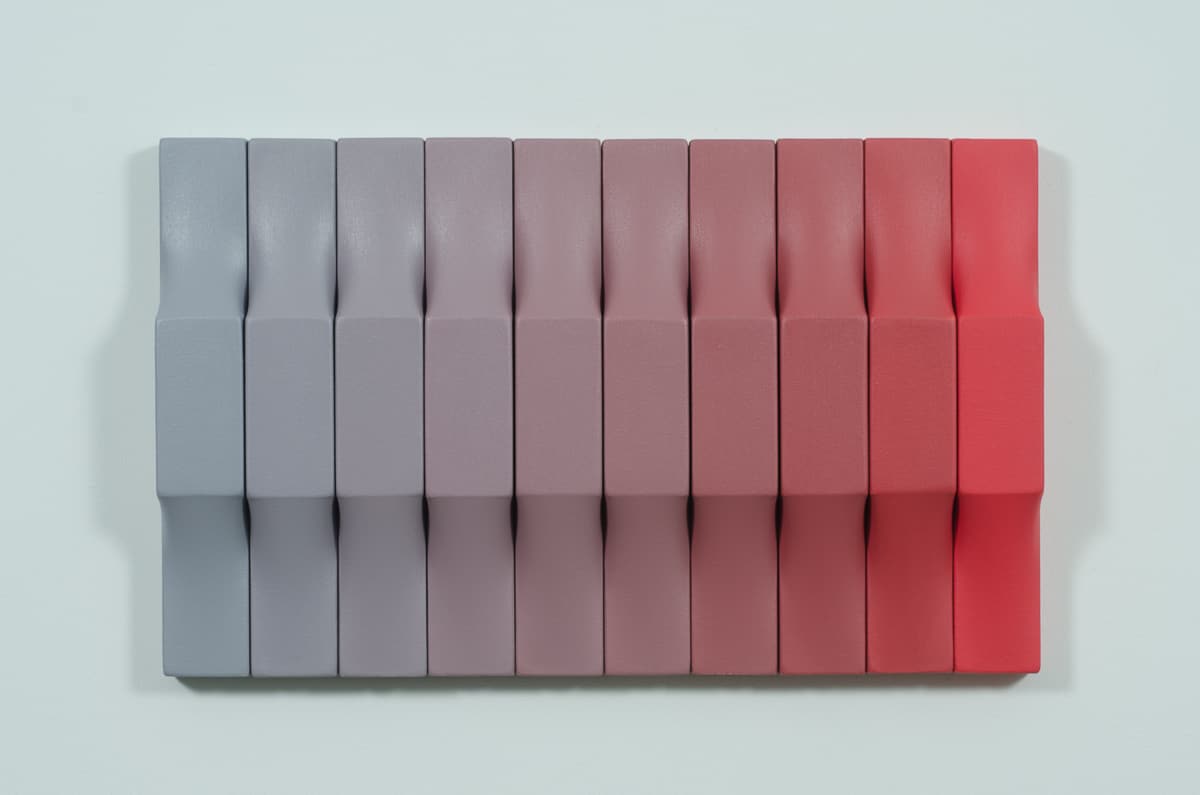
Forgo Arpad 10 30x50x5 cm, 2015, courtesy of the artist
What is your opinion on a statement that this form of socially and politically uncommitted artis a safer way for artists?
ÁF: We make decisions in life, you cannot avoid that.
Once you make the decision that you want to be an artist, there is no guarantee for any success, and at the same time you cannot build another career, another life.
I think there is no point of talking about safety in art. Making socially and politically uncommitted art does not stop you from expressing opinions in other forms, so making geometric art does not mean you are not sensitive to those topics.
AG: Socio-political art seems to be a smaller challenge, as it’s all manifested in front of you. It’s obviously interesting for the masses; it’s relevant and often has a scandalous aspect. All of this leads a larger audience, and an enhanced appreciation. But how do I make the viewers feel what I feel is in me? My experience shows that trying to convey your own narration, by using a strange language specific for you as the artist, means choosing the more difficult path.
Do you have a favourite contemporary artists? Which recent projects caught your attention?
AG: What I like are often excerpts from all kinds of different works. Having no particular work in mind, I might be leaning toward interactive works and installations that remind me of great spaces out of nowhere, like those by Yayoi Kusama. I like to discover the work for myself, go in, touch it, and be able to experience it directly somehow.
Other than that, I’m always very interested in the exhibitions at the Foundation Beyeler in Riehen. You have to appreciate the architecture and the light, it’s a sheer pleasure just to be there.
ÁF: I love the works of Agostino Bonalumi, Carlos Cruz Diez, Zilia Sanches and Jan Maarten Voskuil. I was lucky enough to have recently visited the Sicardi Gallery in Houston, TX, which is focusing on South American avant-garde artists. At first they thought I was Argentinean and although I made it clear I wasn’t, I was taken around the gallery spaces, as well as the storage area, where the owner showed me everything. It was astonishing.
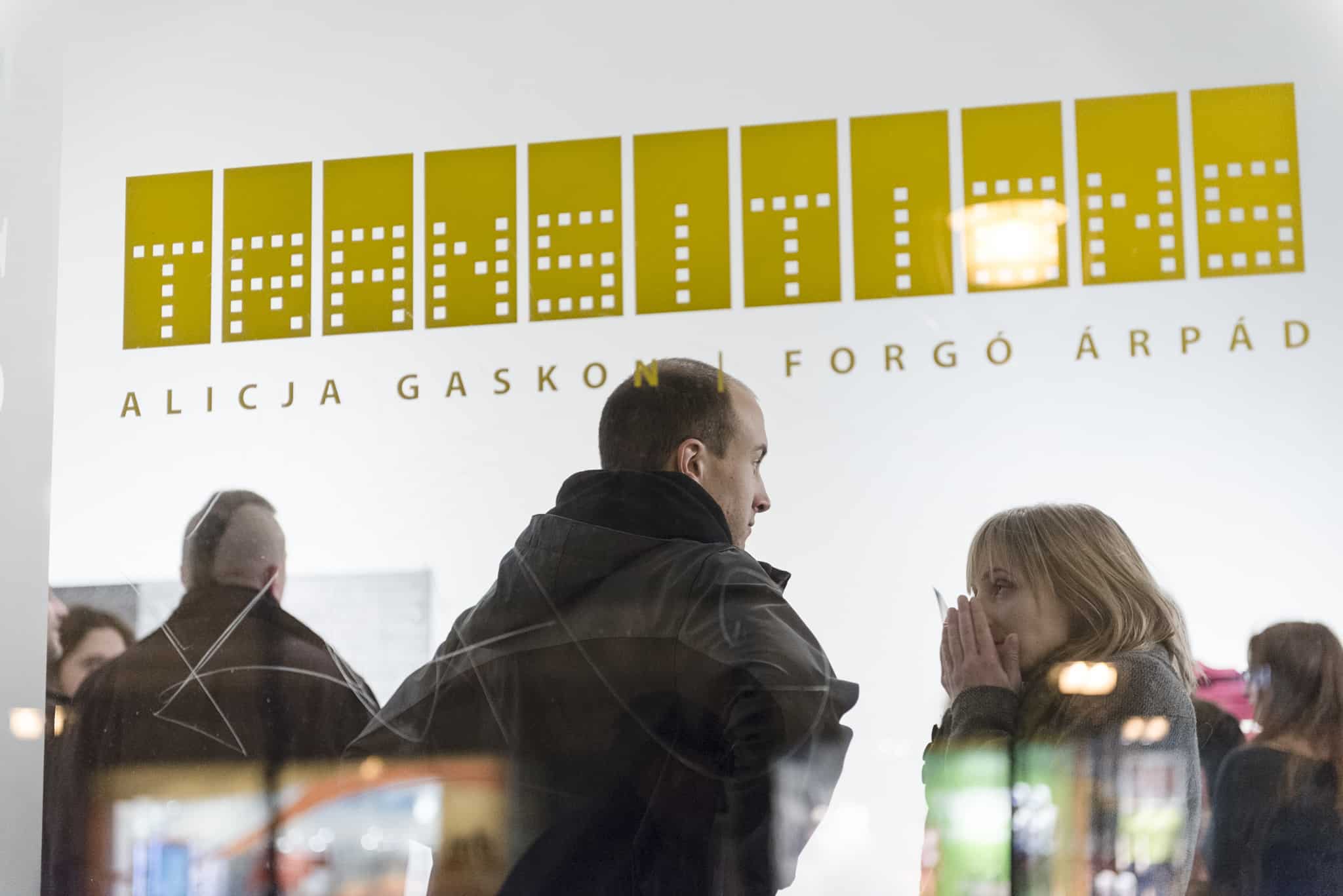
Opening of the exhibition “Transitions”, artists: Alicja Gaskon and Árpád Forgó, curator: Tomasz Piars, Platan Gallery, March 2016, Budapest
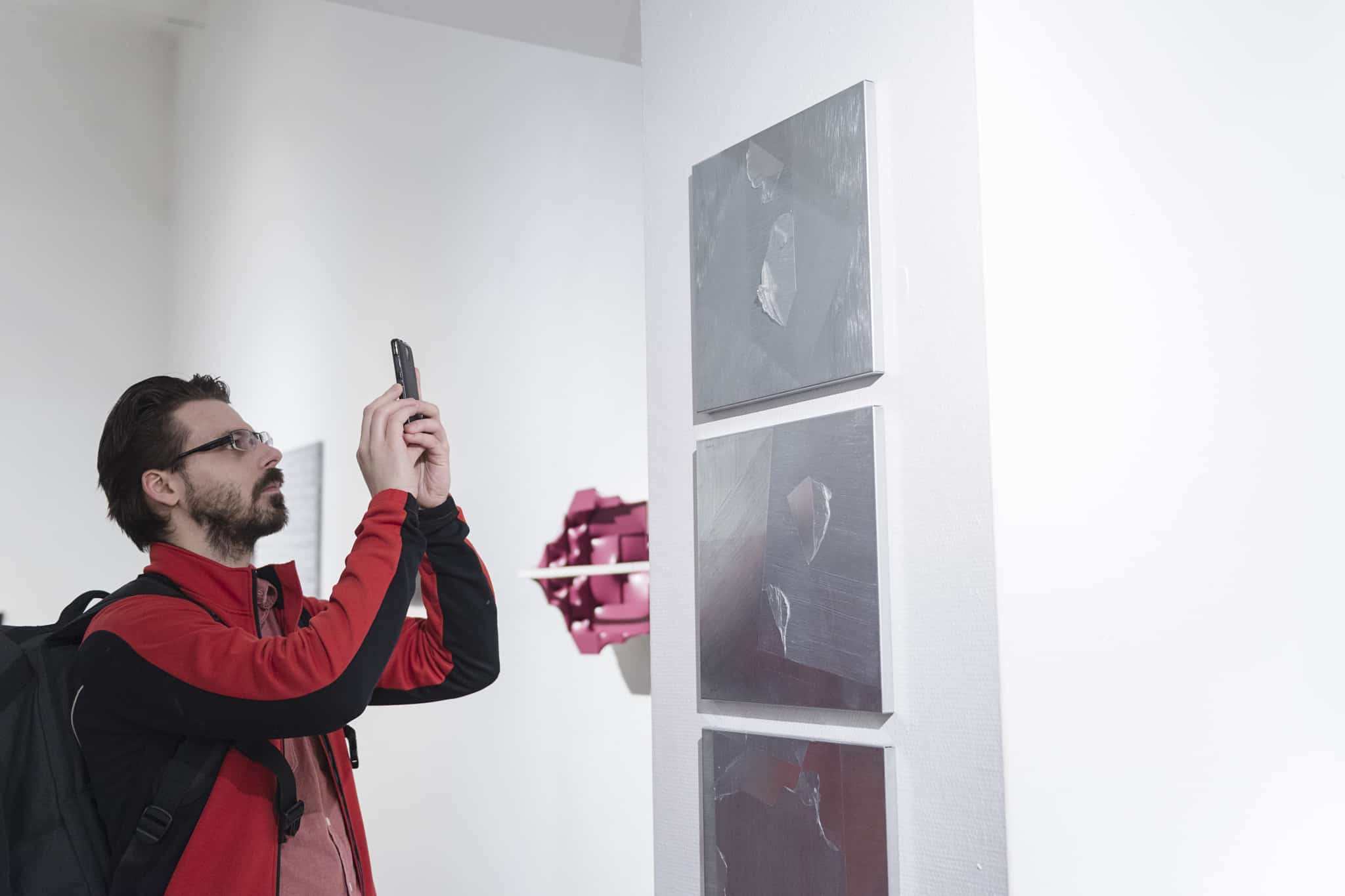
Opening of the exhibition “Transitions”, artists: Alicja Gaskon and Árpád Forgó, curator: Tomasz Piars, Platan Gallery, March 2016, Budapest

Opening of the exhibition “Transitions”, artists: Alicja Gaskon and Árpád Forgó, curator: Tomasz Piars, Platan Gallery, March 2016, Budapest

Opening of the exhibition “Transitions”, artists: Alicja Gaskon and Árpád Forgó, curator: Tomasz Piars, Platan Gallery, March 2016, Budapest
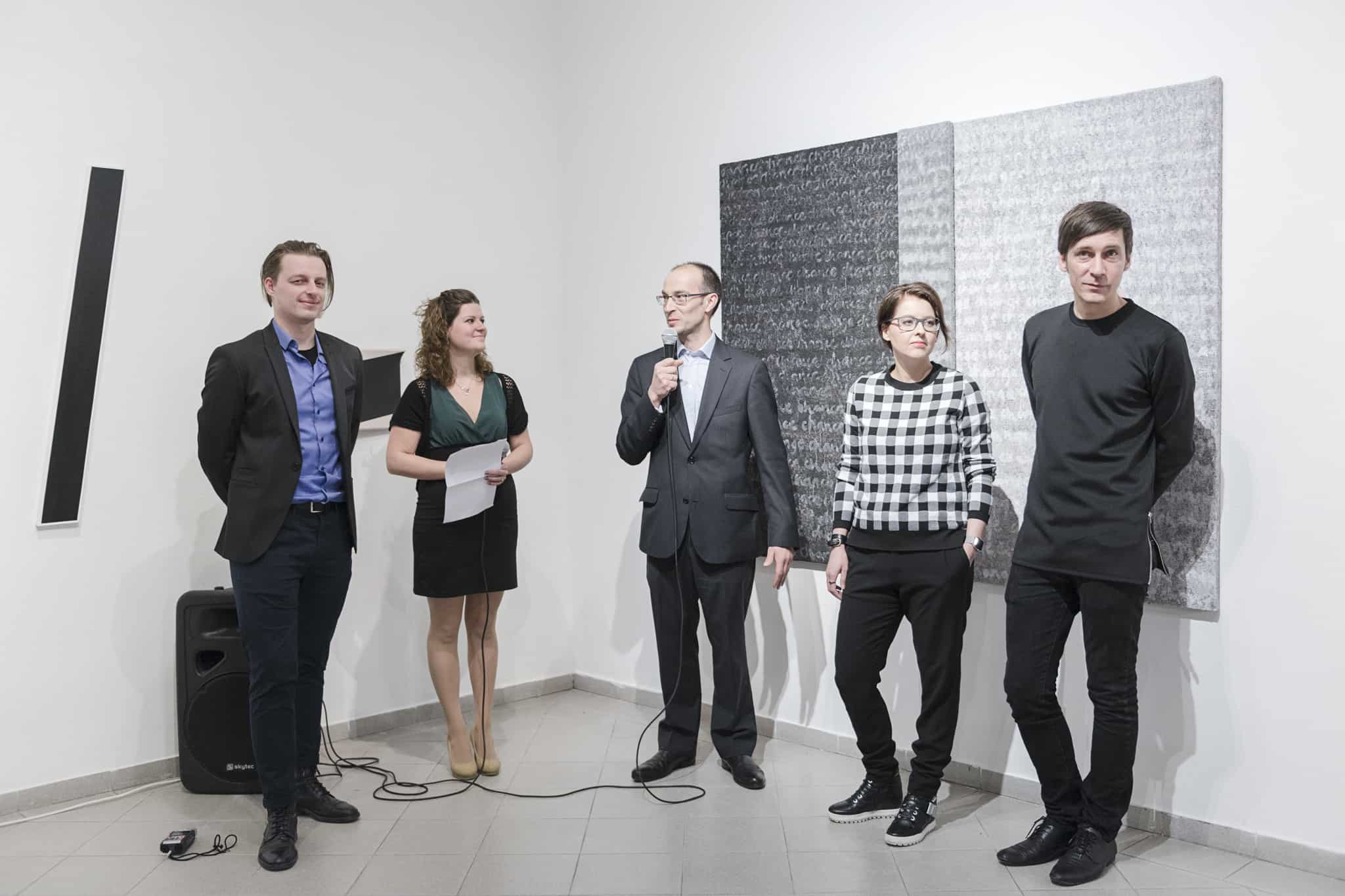
Opening of the exhibition “Transitions”, artists: Alicja Gaskon and Árpád Forgó, curator: Tomasz Piars, Platan Gallery, March 2016, Budapest, artists: Alicja Gaskon and Árpád Forgó, curator: Tomasz Piars
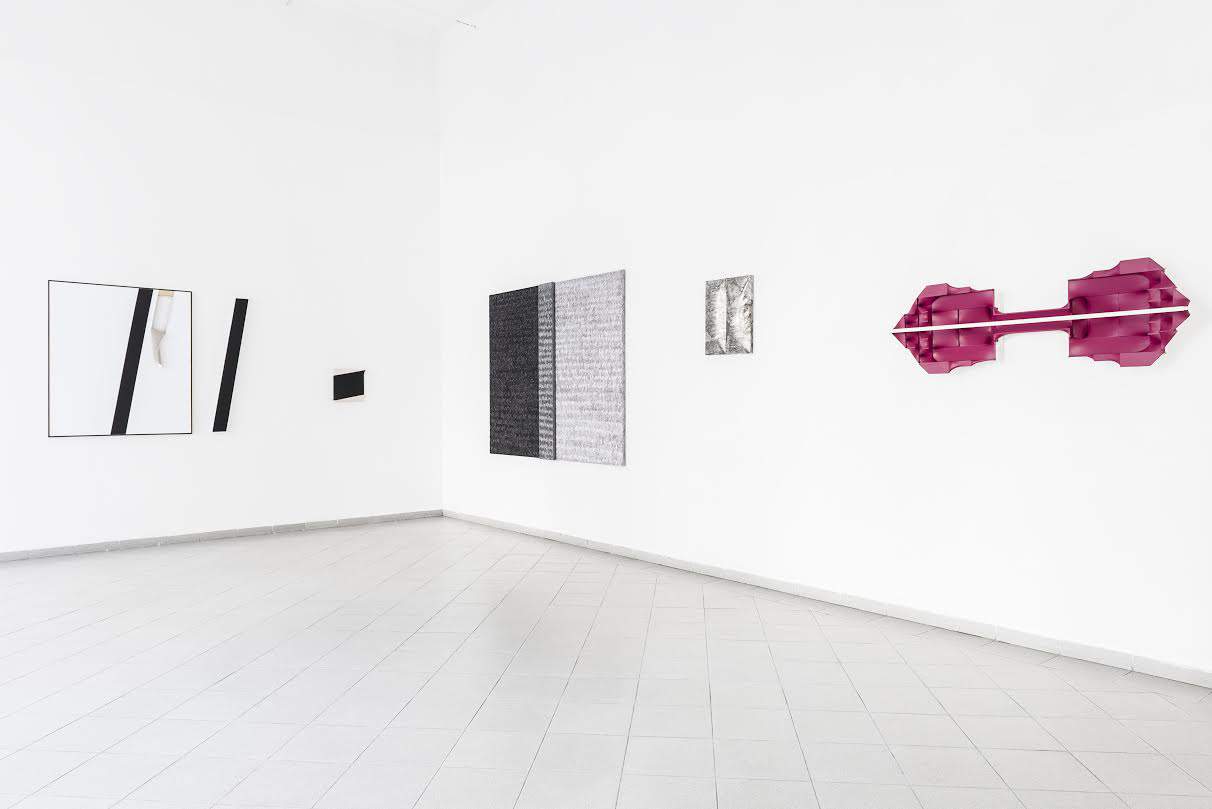
Display view, exhibition “Transitions”, artists: Alicja Gaskon and Árpád Forgó, curator: Tomasz Piars, Platan Gallery, March 2016, Budapest
“Transitions” Platan Gallery, Andrássy Street 32, Budapest
Opening March 2th, 7 pm. On view till March 31th
Interview by: Patrycja Rup (Polish culture manager, film and theatrical event producer, journalist. Interested in film, media and art criticism. Lives and works in Budapest.)




